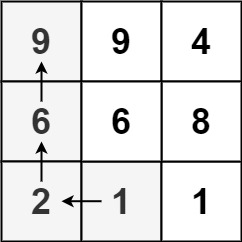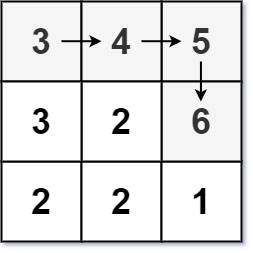329.Longest Increasing Path in a Matrix
Problem description:
Given an m x n integers matrix, return the length of the longest increasing path in matrix.
From each cell, you can either move in four directions: left, right, up, or down. You may not move diagonally or move outside the boundary (i.e., wrap-around is not allowed).
Example 1:

1 | Input: matrix = [[9,9,4],[6,6,8],[2,1,1]] |
Example 2:

1 | Input: matrix = [[3,4,5],[3,2,6],[2,2,1]] |
Example 3:
1 | Input: matrix = [[1]] |
Constraints:
m == matrix.lengthn == matrix[i].length1 <= m, n <= 2000 <= matrix[i][j] <= 231 - 1
Solution:
- naive: check all the node and calculate
- Top down DP
for each cell, memorize the max increasing path could go
1 | class Solution: |
time complexity: $O()$
space complexity: $O()$
reference:
related problem: